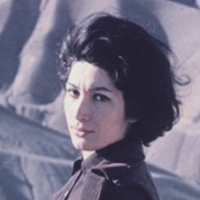Archives
Edition 2019
Films
Crew:
Director: Forough Farrokhzad
Screenplay: Forough Farrokhzad
DOP: Soleiman Minassian
Production: Studio Golestan, Ebrahim Golestan
Restored by Fondazione Cineteca di Bologna and
Ecran Noir productions, in collaboration with Ebrahim Golestan. With the support of Genoma Films and Mahrokh Eshaghian.
Screenplay: Forough Farrokhzad
DOP: Soleiman Minassian
Production: Studio Golestan, Ebrahim Golestan
Restored by Fondazione Cineteca di Bologna and
Ecran Noir productions, in collaboration with Ebrahim Golestan. With the support of Genoma Films and Mahrokh Eshaghian.
Set in a leper colony in the North of Iran, this documentary reveals the pain and suffering of those marginalized by society, and how anguish can be helped through gratitude. Through this medium, Farrokhzad shows how disease can be universal in its parallels with social exclusion.
-
Cast:
Forough Farrokhzad, Ebrahim Golestan, Hossein Mansouri -
Original Title:
Khaneh siah ast -
Country:
Iran -
Year:
1963 - 20 min Subtitles PT
Crew:
Director: Forough Farrokhzad
Screenplay: Forough Farrokhzad
DOP: Soleiman Minassian
Production: Studio Golestan, Ebrahim Golestan
Restored by Fondazione Cineteca di Bologna and
Ecran Noir productions, in collaboration with Ebrahim Golestan. With the support of Genoma Films and Mahrokh Eshaghian.
Screenplay: Forough Farrokhzad
DOP: Soleiman Minassian
Production: Studio Golestan, Ebrahim Golestan
Restored by Fondazione Cineteca di Bologna and
Ecran Noir productions, in collaboration with Ebrahim Golestan. With the support of Genoma Films and Mahrokh Eshaghian.
Director
Forough Farrokhzad

Forough Farrokhzad (1934-1967) was born in Iran and was one of the most influential directors and poets in her country. By writing from a feminist perspective during a time when art in Iran was dominated by men, Farrokhzad redefined boundaries for women. In 1955 she published The Captive, her first poetry collection and, seeing as Farrokhzad was a divorcee whose writing honestly approached political topics, her poems provoked an extensive controversy in Iran, prompting her move to Europe, where she would write her second collection, The Wall. Following her return to Iran, she publishes Rebellion in 1958 and, after meeting Ebrahim Golestan in 1962, Farrokhzad develops a passion for cinema, directing The House is Black that same year. She would still write two more poetry books before her death in 1967, leaving behind a broad collection of work that continues to influence both the persian language and the Iranian culture today.



